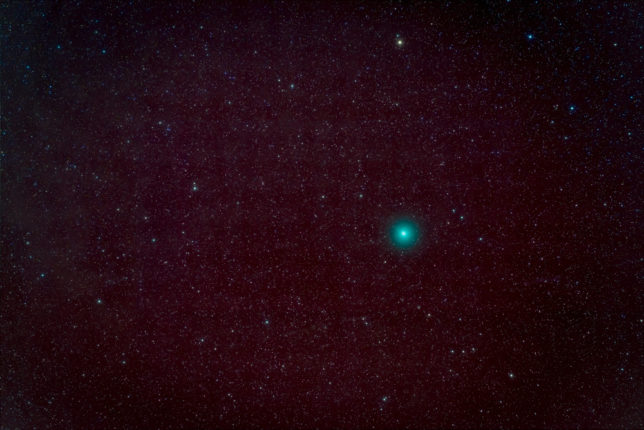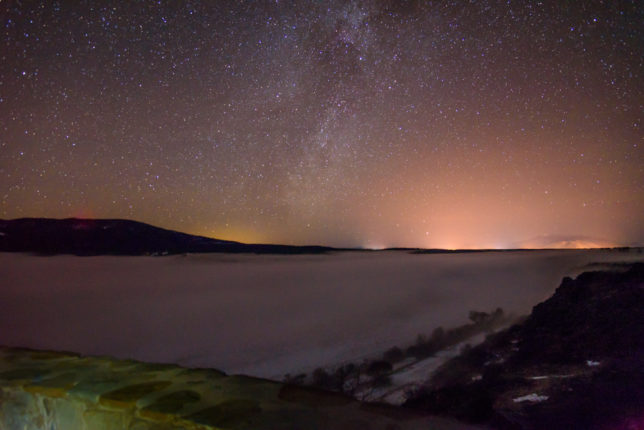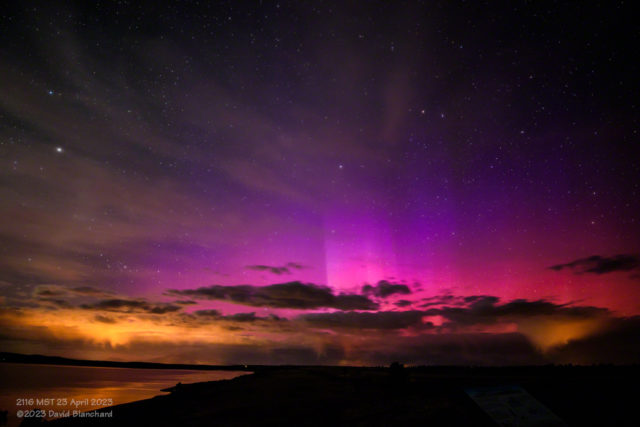
The aurora borealis that occurred Sunday night (23 April 2023) was an impressive event. The storm parameters* were all indicative of a major event so it was worth the effort to drive to a nearby dark (or at least reasonably dark) location and try to get some aurora photos.
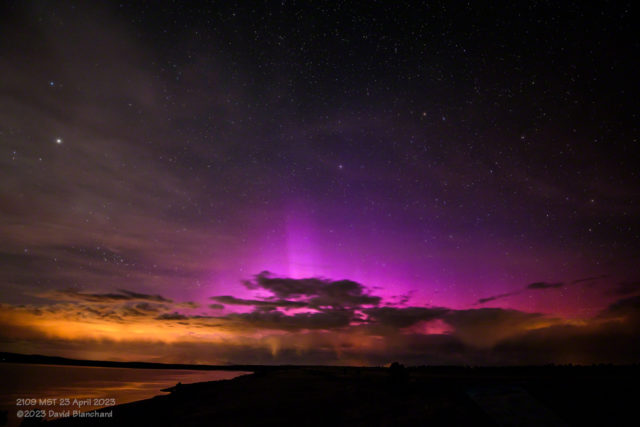
I assumed that the aurora, if visible from northern Arizona, would be low on the northern horizon so I wanted a location without city lights to my north. The best location would have been the South Rim of Grand Canyon looking over the North Rim but clouds were plentiful in that region. So I headed south from Flagstaff and ended up on Anderson Mesa which has many good viewing locations.
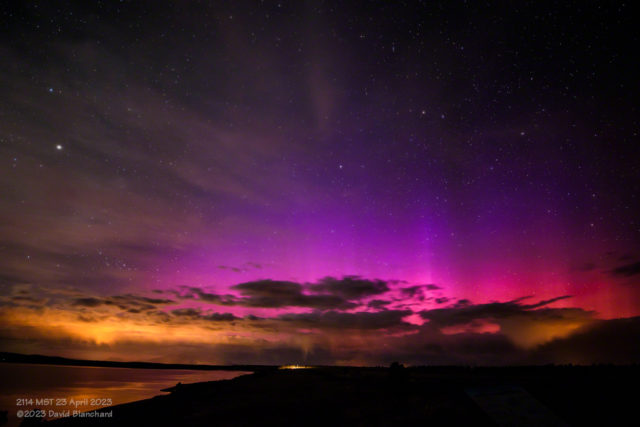
Upon arrival I looked to the north but saw nothing with the unaided eye. A quick photo test, however, revealed that the aurora was in progress and visible through the clouds that were to the north. I took photos from about 2045 until 2330. The aurora was at its best from 2100 to 2145. It was much weaker and very faint after that time although still visible. At its peak, the auroral colors extended upwards 30–40 degrees in the sky!

I tried to see the aurora with the unaided eye but was never able to see it. I think that was because there was some light pollution from Flagstaff (yeah, it’s a Dark Sky city but it puts out more stray light with each passing year) and lights reflecting off the low clouds that were present to the north.
Time-lapse of aurora from 2053–2228 MST 23 April 2023.
But the camera had no difficulty capturing the subtle colors. I was shooting with a Nikon D750 and a Tamron 17–35mm wide angle lens set at 17mm, aperture was f/2.8, exposure was 15 seconds, and ISO 3200. I was using an intervalometer set to take a photo every minute. The camera was also set to do LENR (long exposure noise reduction) so that the actual time the camera was active was 30 seconds out of each minute. This gave me a chance to quickly review images after each shot was taken and that was useful. On the other hand, taking exposures without LENR and shooting, for example, every 15 seconds would have resulted in a much smoother time lapse. Good stuff to know for the next time we get an aurora event this far south!
*I was using SpaceweatherLive.com to monitor storm parameters.
